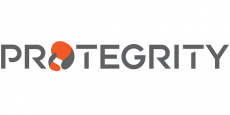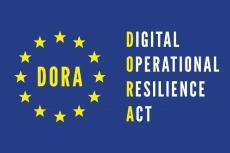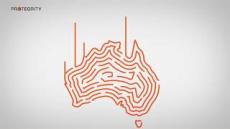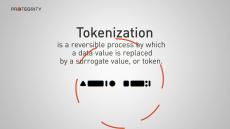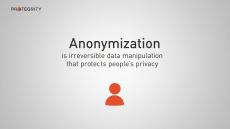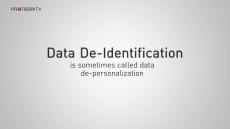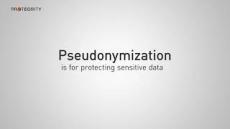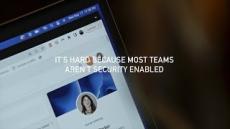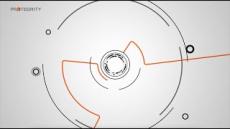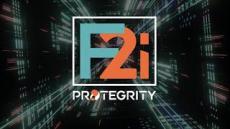|
By Protegrity
The way we think about data security is changing. Organizations need to protect sensitive information while still making it accessible for innovation and business growth. But as cyber threats grow more sophisticated and regulations become more stringent, security teams face a major challenge. This is where Data Security Platforms (DSPs) come in—they provide a unified approach to safeguarding data, ensuring compliance, and reducing complexity.
|
By Protegrity
The National Institute of Standards and Technology (NIST) is a U.S. government agency that develops and promotes standards, guidelines, and best practices to enhance information security and privacy. Recognized globally, NIST frameworks set the benchmark for building secure systems and managing cybersecurity risks.
Featured Post
For months, the impending Digital Operational Resilience Act (DORA) deadline has dominated boardroom discussions across the financial sector with its potential to reshape operational and regulatory practices. Now that DORA is officially in effect, attention has shifted to other matters, such as a new US presidential inauguration, AI, and fiscal concerns for 2025. Yet DORA should remain a major cause for concern as the regulation is now active and enforcement has begun. Given its likely strict enforcement, financial organisations and third parties must maintain focus on compliance to avoid major regulatory and operational risks.
|
By Protegrity
Protegrity specializes in protecting sensitive data, a focus we’ve maintained for around 20 years. Our customer base includes many large enterprises, particularly in the healthcare and financial sectors, spanning across the globe. Our clients include some of the most renowned companies worldwide.
|
By Alex Afflerbach
Let’s be real: your “smart” devices might be the dumbest thing in your house when it comes to your data protection and security. That baby monitor? Hackable. Your home camera? Vulnerable. Even your voice assistant could be spilling secrets you didn’t know it heard. And what about your home router, the nerve center of your connected devices? It’s often an overlooked Achilles’ heel in home security.
Featured Post
As we enter 2025, the global economic landscape remains a mix of challenges and potential shifts that will shape markets and industries worldwide. From high interest rates to the evolving impact of AI, there are several key factors that will define the year ahead. While there will be friction in some areas, persistence, agility and out-of-the-box thinking will ensure a competitive edge.
|
By Protegrity
Attributed to Michael Pride, Senior Sales Director – APAC, Protegrity In recent years, Australia’s healthcare sector has faced significant challenges regarding data privacy. With high-profile breaches exposing sensitive patient information, the responsibility for safeguarding this data has shifted from individuals to organisations.
|
By Protegrity
Collaboratively authored by Anthony Cammarano, Mario Vargas, Muneeb Hasan, Alexandre Charlet, Andre Castro, Vic Levy, Ken Darker and Iwona Rajca Generative AI (GenAI) applications are revolutionizing how businesses interact with data, primarily through Retrieval-Augmented Generation (RAG) pipelines, combining language models with vast enterprise knowledge bases. These pipelines allow organizations to query extensive internal datasets in real time.
Featured Post
As we approach 2025, financial institutions across the EU face the challenge of complying with the Digital Operational Resilience Act (DORA), which is set to take effect on the 17th of January. DORA is focused on strengthening cybersecurity and operational resilience across financial ecosystems, with the consequences for non-compliance ranging from regulatory fines to reputational damage and an increased risk of cyberattacks.
|
By Protegrity
For organizations handling sensitive data, finding a secure and efficient way to test data protection solutions is crucial. The Protegrity API Playground offers a straightforward way to test Protegrity’s data protection features. The Playground grants you 10,000 API requests after registration to use as you see fit: protecting names, addresses, credit card numbers – or any other data your organization considers secure.
|
By Protegrity
Protegrity is proud to partner with AWS, offering businesses like yours the integrations you need to start protecting data at the field level. With precision data protection through Protegrity and AWS, companies can start meeting regulatory compliance standards outlined with PCI DSS, GDPR, Nacha, or other compliance requirements. With regulatory compliance standards met, businesses can unlock opportunities in improved cloud migration, AI, advanced analytics, reputation management, and more. See how Protegrity’s data protection and partnership with AWS can take your organization to the next level.
|
By Protegrity
Primitive information sharing has greatly evolved, creating a kaleidoscope of various ways we communicate and share information, both publicly and privately. This change in data ecosystems affects you – data owners responsible for how data is distributed, protected, and accessed hold sensitive data in the palms of their hands. As we continue to evolve, data protection should be in the center of any business strategy, and relying on Snowflake or AWS security plans is not enough. Discover how modernizing your data processes and investing in your data protection changes the way you do business.
|
By Protegrity
We’re entering an age where technology is quickly surpassing us, with advancements and capabilities outshining any other time in history. As businesses look to evolve with emerging technologies, so do regulatory requirements designed to protect PII used in creating these systems and programs. If the stakes weren’t high enough, the 2024 Australian Data Privacy Act is shifting full data responsibility back onto businesses, holding big enterprises to a more significant standard in their data ownership.
|
By Protegrity
What is tokenization? This method revolutionized the modern way we protect data. In today’s age, InfoSec teams can deploy keyless and reversible methods with tokens, which replace sensitive Personal Identifiable Information (PII) and store this information in both vaulted and vaultess token look-up tables. When the data is needed, it can be re-identified and accessed by the right parties, ensuring sensitive information remains protected. Watch above to learn more about this revolutionary data protection method.
|
By Protegrity
What is anonymization? InfoSec teams can utilize anonymization to irreversibly scramble sensitive data values, thereby protecting an individual’s private information. If the sensitive information can no longer be linked to an individual, businesses have a better chance of saving on audits, complying with regulatory requirements, and scaling their ability to compete – all leading to revenue increases for your bottom line.
|
By Protegrity
De-identifying data is what every data protection method is designed to do, making it the basis of effective cybersecurity. Common data fields that are de-identified by businesses would include names, birth dates, addresses and zip codes, National ID, and Social Security Numbers. By obfuscating sensitive data values through reversible and irreversible methods, your customers and patients can rest easy knowing their data can only be viewed by authorized parties.
|
By Protegrity
What is pseudonymization? It’s one of many data protection methods that allow businesses to improve their sensitive data protection across systems by replacing values with pseudonyms. Learn more about this crucial data protection method and learn more about utilizing this method to boost your business’s cyber security posture.
|
By Protegrity
To foster a culture of data protection that enhances global enterprises through secure application development, Protegrity developed the Shift Left Developer community. Our community recognizes the discrepancies and challenges data teams face when it comes to implementing solutions – both technologically and professionally – and offers the resources, guides, and cross-collaboration from teams around the world to help develop effective and efficient approaches to integration processes.
|
By Protegrity
Welcome to the new age of data usage. Start utilizing your data to its full potential while maintaining compliance and end-to-end protection. More from Protegrity: For over 15 years, Protegrity has set the standard in precision data protection, helping enterprises secure and use a perpetually growing store of sensitive data. Through granular protection and intelligent role-based empowerment, Protegrity helps companies focus on growth, development, and optimization.
|
By Protegrity
Your data protection methods provided through your platform are your lines of defense against cybercriminals, ransomware, and malware. In this episode, we explore the differences between data security, data protection, and data privacy. James Rice and Clyde Williamson will explore business cases, data access control, Protegrity technology, and detail out the inner workings behind data privacy.
|
By Protegrity
As companies migrate sensitive data to cloud-based applications like Snowflake and the Google Cloud Platform, prioritizing a data security solution with easy-to-use security controls is the key to your company's success. With Protegrity, you'll be able to manage sensitive data, no matter where it goes.
|
By Protegrity
With privacy now a top priority for lawmakers and consumers, companies must protect and leverage data for their strategic benefit. Data privacy can be daunting for organizations to spearhead on their own. Thankfully, Protegrity takes the guesswork out of complying with regulations, protecting personal information, and analyzing data for trends and AI-driven initiatives.
|
By Protegrity
In today's world, more and more companies are moving their data to the cloud, but malware and cyberattacks still exist. Protegrity can help your company remain secure even as it explores different cloud environments. From SaaS applications to data stockpiles, Protegrity Cloud Protect simplifies the enforcement and management of data-security policies across disparate cloud systems and tools - all through one centralized solution.
|
By Protegrity
It's Time to 'De-Identify' Your Data. In the face of costly data breaches and increasing regulatory pressure, protecting your data and that of your customers should be your top priority. rotegrity can fully protect your data as it moves through cloud and on-premises environments with pseudonymization, anonymization, and other future-forward data protection methods.
|
By Protegrity
At its core, tokenization simply substitutes a randomly generated value or "token" for a cleartext value. A lookup table is then used to trace the cleartext value back to the corresponding token so an authorized user can use a digital token to read the data.
|
By Protegrity
As companies embrace the operational flexibility of the cloud, security, and compliance concerns are at the forefront of their minds. Developing a proper cloud data-protection architecture requires a personalized and innovative security approach - that's where Protegrity steps in.
- February 2025 (3)
- January 2025 (4)
- December 2024 (3)
- November 2024 (4)
- October 2024 (7)
- September 2024 (3)
- August 2024 (7)
- July 2024 (7)
- June 2024 (2)
- May 2024 (1)
- April 2024 (2)
- March 2024 (3)
- February 2024 (4)
- January 2024 (6)
- December 2023 (1)
- November 2023 (1)
- October 2023 (1)
- September 2023 (4)
- August 2023 (6)
- July 2023 (1)
- June 2023 (4)
- May 2023 (4)
- April 2023 (6)
- March 2023 (6)
- February 2023 (6)
- January 2023 (3)
- December 2022 (1)
- November 2022 (1)
- October 2022 (5)
- August 2022 (2)
- June 2022 (1)
- May 2022 (3)
Our data protection system protects sensitive data anywhere and everywhere, empowering organizations across the globe to use data to create better customer experiences, make intelligent decisions, and fuel innovation.
Protegrity’s Data Protection Platform centralizes policy, audit, logging, and monitoring to secure sensitive data. Our decentralized policy enforcement enables businesses to embed data protection for data in motion, at rest, and in use, while allowing them to protect specific data types with the full range of protection methods they require.
The Business Case for Data Protection:
- Protect sensitive data, where it travels or resides, without impacting usability.
- Protect the data regardless of the different attack methods. If a breach occurs, data is de-identified and is unusable.
- Accelerate and be confident in adopting new technologies with proven, future-proof protection.
- Quantify security and privacy for data sets to lower your enterprise risk profile and meet evolving privacy laws across the enterprise.
- Decrease time to market for new AI and analytics use cases by enabling rapid, secure usage of sensitive data.
- Establish a centralized data privacy service for the enterprise to meet Data Sovereignty requirements.
- Adopt and enforce global regulations as data privacy requirements evolve.
- Simplify and standardize rules for sensitive data with centralized policy management.
- Secure data access with role-based access control, regardless of platform, silo, or access path.
Make your data secure and borderless.


